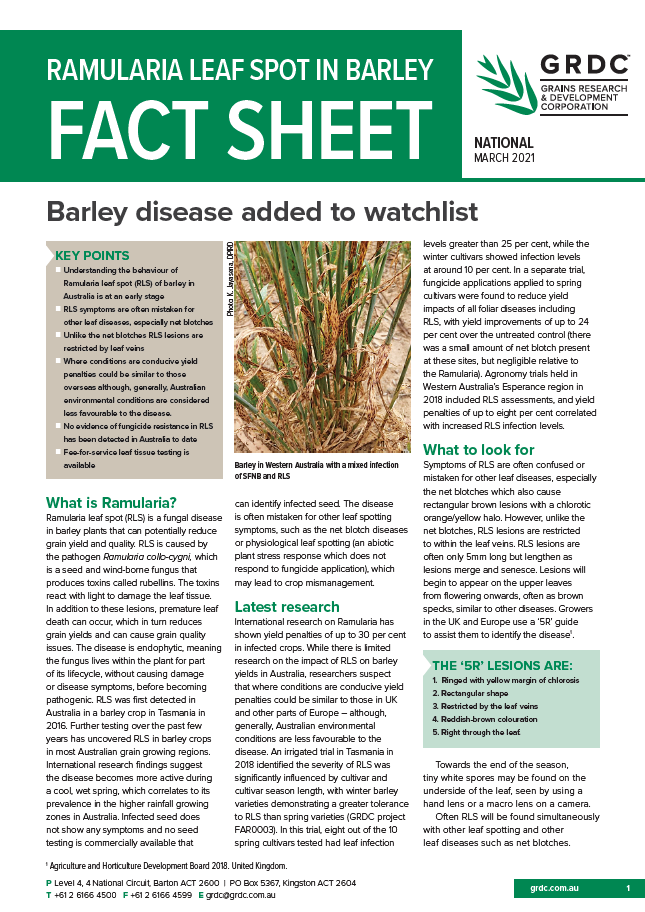Distribution of ramularia across the Australian grain belt
Investment
Distribution of ramularia across the Australian grain belt
Ramularia leaf spot (RLS) caused by Ramularia collo-cygni is a barley disease found in most areas of the world and recently confirmed to be present in Western Australia and Tasmania. Disease spreads aerially by spores within a season while internally infected seed also plays a role in its distribution.
This project aims to determine the current distribution of RLS in Australia by testing leaf and seed samples from a combination of National Varietal Trial sites and commercial crops. The high and medium rainfall areas of grain growing areas are expected to be the most likely to host the disease and consequently, survey efforts will be concentrated in these zones across the three GRDC Regions, Western, Southern and Northern. While the use of fungicides is expected to be useful against yield losses from RLS, this pathogen has a high risk of developing fungicide resistance, something that is already present in Europe and New Zealand. Therefore, this project will also assess the fungicide resistance status of RLS isolates present in Australia, enabling selection of the most appropriate fungicides for control.
- Project start date:
- 01/09/2019
- Project end date:
- 30/01/2022
- Crop type:
-
- Barley, (Cereal)
- Organisation
- Department of Primary Industries and Regional Development
- Region:
- North, South, West
- Project status
-
Completed
GRDC News
Surveillance around the country
03 Aug 2022
All states and territories conduct a range of surveillance activities throughout the year. The following...
National disease surveillance guides management
09 Mar 2021
Each year, pathologists from around Australia survey the incidence of disease in paddocks to stay...
Resources

Ramularia leaf spot in barley - GRDC
Understanding the behaviour of Ramularia leaf spot (RLS) of barley in Australia is at an early stage.
